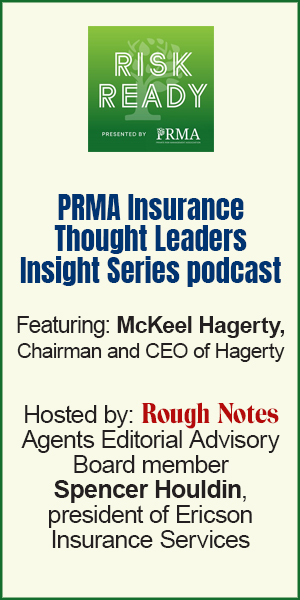Prevention-first strategies in
a rising premium market
By Randy Boss, CRA, CRM, MWCA, SHRM-SCP
The commercial auto market is at a crossroads, with rising claims,
increasing premiums, and disruptive new risks; yet
every challenge presents an opportunity for innovation.
Over the decades, I’ve seen our industry transform—from landline phones and paper logs to smartphones and real-time telematics. Yet, one constant remains: Ignoring early warning signs will only lead to disaster.
The commercial auto insurance market is flashing those warning signs now. According to the Council of Insurance Agents & Brokers Market Survey, premiums have increased for 54 consecutive quarters, with Q4 2024 alone seeing an 8.9% jump. This isn’t just a statistic—it’s a wake-up call, much like those small maintenance issues that, if unchecked, turn into a catastrophic breakdown on the highway.
When you break down these premium hikes, it all comes back to accumulated risk. In Q4 2024, 50% of survey respondents reported an increase in claims, while 41% noted a shrinkage in underwriting capacity. Insurers are becoming more selective. Every nuclear settlement, fraudulent claim, and catastrophic accident adds to the overall burden, forcing underwriters to tighten their belts.
A November 2024 AM Best analysis revealed that the average loss per commercial auto liability claim has doubled since 2014. The numbers paint a clear picture: Fleets must shift from a reactive insurance approach to a preventive strategy.
But that shift may not be easy with challenges on the horizon.
- Fleet electrification. As if rising premiums weren’t enough, the industry faces a seismic shift in fleet composition. A new report surveying 200 fleet stakeholders across schools, shuttles, states, delivery, waste management, utility, and long-haul among other sectors, found that the adoption of battery electric vehicles (BEV) for commercial fleets in the United States surged in 2023, as companies have begun to plan for more significant investments down the road. While EVs offer long-term sustainability benefits, they introduce new risks that disrupt traditional underwriting models.
Take, for example, a Midwest logistics company that recently electrified 40% of its fleet. Within months, they faced unexpected costs: battery replacements exceeding $20,000 per vehicle, delays due to limited charging infrastructure, and increased repair times due to the need for specialized mechanics. Traditional fleet maintenance policies were insufficient, leading to gaps in coverage and higher out-of-pocket expenses. Fleets embracing EVs must also adapt their risk management strategies—or face significant financial consequences.
- Rising “nuclear” settlements. A trucking company in Texas recently learned about this the hard way. After an accident involving a minor rear-end collision, the plaintiff’s attorney framed the case as a public safety failure, leveraging emotional appeals to secure a $50 million verdict—far beyond the actual damages.
These “nuclear” settlements, where liability claims result in massive, precedent-setting payouts, are becoming more common. They’re fueled by jury emotions, aggressive litigation strategies, and social inflation, creating significant financial risks for fleets and insurers. Businesses must take proactive legal and safety measures to mitigate exposure and prevent their next claim from becoming a financial catastrophe.
Flipping the script
Traditionally, the industry has focused on risk transfer through insurance—paying claims after the fact. But with today’s landscape, this approach is unsustainable. Instead, fleets must flip their approach, emphasizing prevention and cost containment before relying on insurance. Here’s how.
- Harness the power of data and telematics. Gone are the days of relying solely on experience and gut instinct. Today’s telematics systems, dashcams, and real-time analytics allow fleet operators to monitor driver behavior, vehicle performance, and incident trends.
Take the case of a Michigan-based delivery fleet that reduced accident frequency by 32% after implementing AI-powered dashcams and automated driver alerts. Analyzing real-time data, they identified risk hotspots, enforced corrective training, and negotiated lower premiums with their insurer based on measurable improvements.
- Invest in proactive claims management. A trucking company in Georgia faced escalating claim costs due to repeated minor accidents. Instead of accepting rising premiums, it implemented a structured claims review process, analyzing every near-miss and incident to identify patterns.
By introducing enhanced defensive driving programs and real-time coaching, they saw a 45% drop in at-fault accidents within 18 months. This proactive approach transformed their risk profile, reducing both claim frequency and insurer scrutiny.
- Leverage modern fleet technologies. Safety isn’t just about policy—it’s about equipping fleets with the right tools. Collision avoidance systems, adaptive cruise control, and lane departure warnings are more than just extras—they’re frontline defenses against risk.
One fleet owner I worked with installed blind-spot detection systems across their fleet. Within a year, they reported a 70% reduction in lane-change-related claims—a statistic that became a key negotiating tool during policy renewal. Modern safety technologies pay for themselves in risk reduction.
- Tackle the unique risks of electrification head-on. EV adoption requires a new approach to fleet safety, maintenance, and insurance strategy. One commercial fleet in California found its EVs more prone to tire blowouts due to increased vehicle weight. After identifying this trend, it partnered with its insurer to develop a customized maintenance program, proactively reducing tire-related downtime by 60% and preventing costly accidents.
Similarly, battery safety training is crucial. Unlike traditional fuel spills, EV battery fires require specialized response protocols. Fleets that fail to educate drivers on proper handling and emergency procedures risk longer recovery times, higher repair costs, and liability concerns.
Strategic negotiations and charting the future
Insurance rates aren’t just dictated by claims history—they’re influenced by underwriting confidence. Fleets that actively manage risk become more attractive to insurers, often securing lower premiums and better coverage terms.
During a recent renewal negotiation, a fleet that adopted telematics, proactive training, and predictive maintenance saw only a 2% rate increase—compared to the industry-wide 8.9% spike. Their secret? They had the data to prove they were a lower-risk operation.
At its core, risk management isn’t about insurance alone—it’s about business survival. Companies prioritizing prevention over reaction don’t just cut costs; they build resilient, future-proof operations.
Think about it like this: Would you rather wait for your truck’s brakes to fail on the road or replace them at the first sign of wear? Risk management works the same way. The sooner you act, the less costly the outcome.
The commercial auto market is at a crossroads, with rising claims, increasing premiums, and disruptive new risks; yet every challenge presents an opportunity for innovation. By flipping the pyramid—prioritizing prevention, then cost containment, and finally insurance—we create a safer, more resilient future for our clients.
The bottom line
The 8.9% premium increase in the fourth quarter of 2024 isn’t just a statistic—it’s a call to action. With nuclear verdicts, EV adoption challenges, and shrinking underwriting capacity, fleets must evolve. The best defense isn’t a bigger insurance policy—it’s a smarter, proactive approach to risk.
Let’s use data, technology, and strategic risk management to turn today’s challenges into tomorrow’s advantages. Success in this industry isn’t about avoiding every storm—it’s about navigating it with confidence.
The author
Randy Boss is a Certified Risk Manager at Highstreet Ottawa Kent in Jenison, Michigan. As a Risk Manager, he designs, builds and implements risk management and insurance plans for middle market companies in the areas of safety, work comp, human resources, property/casualty and benefits. He has over 40 years’ experience and has been at Ottawa Kent for 40 years. He is the co-founder of emergeapps.com, web apps for insurance agents to share with employers. Randy can be reached at rboss@ottawakent.com.





